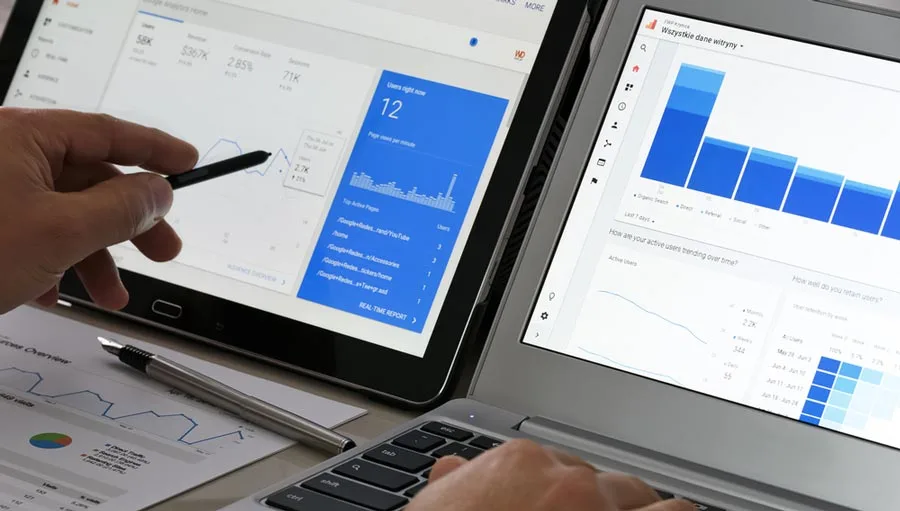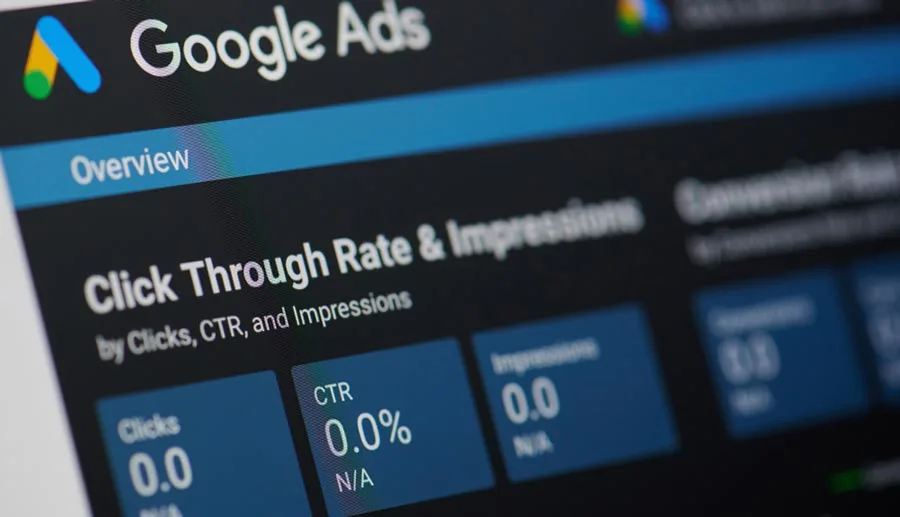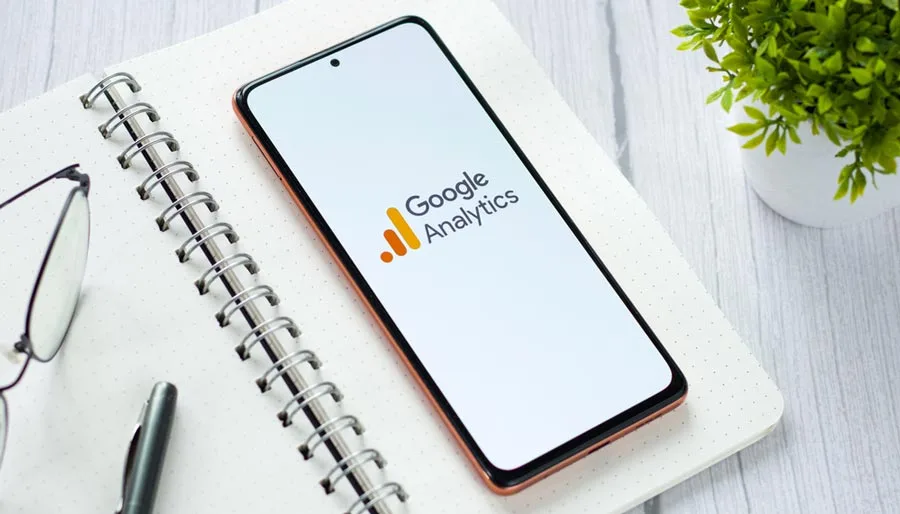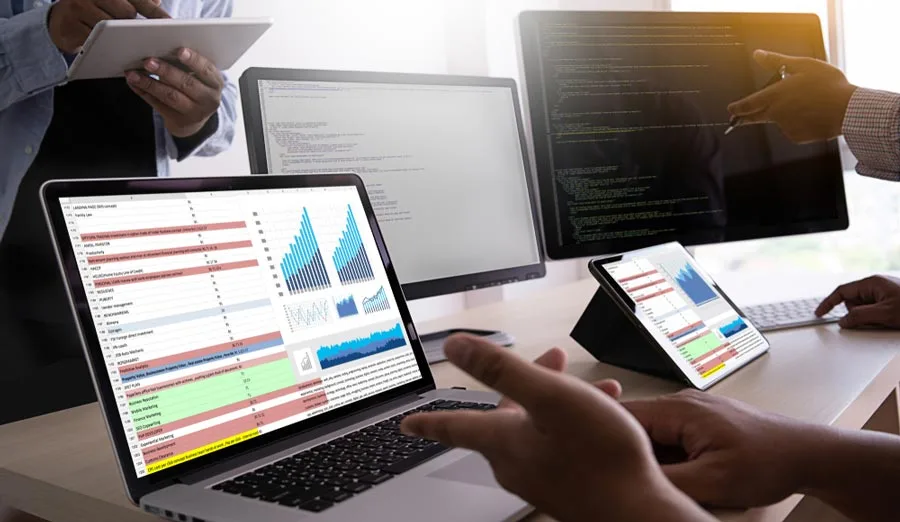Tracking Results that Matter for Rehab Brands
You may already be well-versed in conversion tracking, or this might your first exposure to the term. In either case, our complete guide to tracking conversions for your behavioral healthcare business is here to further your knowledge and keep you aware of what drives admissions.
Keep reading to get a ton of insights from our newly updated resource on conversion tracking in the addiction treatment marketing space in the age of GA4!
What Is Conversion Tracking?
Conversion tracking is a method of capturing and measuring any valuable action that a customer or potential customer takes. We call any valuable interaction that a user has with your company a conversion, this may include actions that occur online such as signing up for your newsletter, downloading your app, submitting a data lead, or making a phone call.
Conversions can also occur offline; examples of offline conversions may include in-store purchases, offline bookings, and appointment scheduling.
Utilizing the data collected from online and offline conversions to gain insights and make actionable decisions is perhaps the backbone of all digital marketing efforts.
There are three aspects to a conversion tracking that a company should take into account in order to successfully grow these key facets.
Facets Of Conversion Tracking:
- Accurate data collection: This includes the correct implementation of your conversion tracking methods.
- Reporting and analyzing: We make sense of the data collected in order to gain insight to make actionable decisions.
- Action / Optimization: We take action based on the conclusions we have made from our analysis.
We have over a decade of experience in conversion tracking implementation and systems optimization, and can definitely utilize these skills to help you to achieve your business goals.
Why Use Conversion Tracking?
Conversion tracking can be used to gain insights on what is working versus what is not working for your company; it allows you to know where there is room for improvement which gives us the ability to capitalize on these opportunities allowing for constant growth. Conversion tracking can help in every aspect of your company, including campaign optimization, website optimization, and offline systems optimization.
Below are a few examples of how we can use conversion tracking to help your business.
- See which keywords, ad groups, or campaigns are performing the best and driving valuable activity.
- See what advertising source is giving you the best cost per acquisition (CPA).
- Identifying bottlenecks in your customer value chain.
- Identifying what drives customer acquisition.
Conversion Tracking & Your Business
Every company is different and therefore requires its own individualized conversion tracking strategy. What works for one company or industry may not work for another. As one of our clients, we will work closely with you to understand your business and your business goals.
Once we have an understanding of what needs to be tracked, we will create key performance indicators (KPIs) for your marketing efforts in order to know and measure valuable actions. We are fully transparent in everything we do and will give you daily reports on campaign performance based on these KPIs.
We will advise you on how to optimize your offline systems while we optimize the online side of the value chain. This is important to ensure that everything in the value chain is working smoothly, bringing the highest rate of customer acquisition at the lowest cost to the company.
A Complete Guide to Conversion Tracking: Updated for GA4
Out of all the possible conversion tracking applications and software options, there’s probably no platform used more often than Google Analytics for most websites. This veteran platform tells you nearly everything you would ever need and want to know regarding your website and its traffic acquisition.
Google Analytics does more than just track how and why traffic ends up on your website. It also tracks several other important metrics specific to each visitor, which pages they visit both, background details about each visitor, and a wealth of other useful tools to help you streamline multiple processes across your websites.
If you’re not as efficient in Google Analytics as you’d like to be, this article is for you. In the sections ahead, we’ll highlight some of the most helpful functions of Google Analytics, and how to better use the platform for tracking conversions and perfecting your marketing efforts.
What is Google Analytics 4 Conversion Tracking?

So how does Google Analytics 4 measure the conversion? For many people, a conversion is when someone navigates from Google ads to your website and fully makes a purchase the first time they interact with your brand. And while this sounds ideal, this is far from the standard pattern of customer behavior.
Sometimes it takes several interactions with a brand before a customer spends money. So while initially, a sale would be great, many times the first conversion you track is a click. This is essentially a visit to your website or landing page.
Conversions actually come in all different forms. Some of the most commonly tracked conversions include:
Playing a video:
- Opting for a newsletter
- Attending a webinar
- Taking a survey
Inside GA4 you’re able to track multiple conversions at once. You can create Events inside your GA4 account to ensure you’re tracking every conversion that’s valuable to your business.
What’s the Difference Between Traditional Google Analytics and GA4?
Several differences exist between the conversion tracking capabilities of GA4 and the legacy version. Listed below are some of the most significant changes:
1. Conversion Tracking is Now Event Tracking
When a user completes a goal on your website the legacy version of your Google Analytics account would trigger a conversion. This was most commonly experienced after a destination goal of landing on a certain page.
In the case of GA4, everything is defined as an event. For example, if you’d like to track the number of times people opt to watch your webinar, you will turn on event tracking.
2. Conversions Have No Limits
The original Analytics allows only 20 goals for each reporting view. If you have over 20 conversions, additional views must be created for that property by removing or editing an older one.
This is a huge problem if your website offers multiple events or locations that could constitute conversions. GA4, on the other hand, has no limit regarding conversion data. This means you’ll have an unlimited number of trackable events to measure the efficiency and appeal of your website.
3. GA4 Allows for Multiple Conditions
The previous version of Analytics allows you to use the following as conversion points:
- Pageviews
- Duration on page
- Events
However, you can only track one of these events at a time. This means you can’t track a number of events in a string, for example:
“A user navigates to my landing page and opts for a webinar.”
You would have to select either the landing page navigation or opting for the webinar – not both. This created significant problems because both are equally important, but completely separate decisions that don’t always take place at the same level of awareness for a future customer.
In GA4 you’re able to use multiple conditions in a single event, guaranteeing that your report is far more accurate. There’s no point in attempting to track conversion data in your marketing efforts if you can’t efficiently monitor your ALL instances and find out an individual conversion rate.
All that said, how do you track conversions with GA4? In the following section, we’ll break down the process of conversion tracking with different marketing campaigns.
How to Setup Conversion Tracking Using GA4

If you’re moving on from Universal Analytics and want to efficiently use GA4, the following list describes how to set up conversion tracking. Remember, it’s no longer possible to start tracking conversions using goals. Your conversion tracking tools consist of event measurement.
- Select “configure” then click “events.”
- After selecting this, you’ll notice several different event options for conversion tracking. GA4 predefines all of these events to help you set up conversion tracking much easier. These events use the following descriptions:
- first visit
- pageview
- click
- scroll
- session view
It is possible to create conversion tracking for a customized event. You have two options if you want to set up conversion tracking using your own customization.
- Use an existing option to create a new event.
- Use Google Tag Manager to create a new tag.
Creating a New Event Using Existing Options
In Universal Analytics you couldn’t create customized events. However, the following section describes how to set up conversion tracking using existing options to create a customized conversion action.
Using a refined option like “pageview” allows you to build onto this event and create a new conversion action. After logging onto your Google Ads account or GA4 platform, load the specific property you’d like to track conversions using a customized event. Simply select “configure,” then “events,” and then “create an event.”
This allows you to create a sequence of customized actions containing predefined events.
Creating a New Event Using Google Tag Manager
You can also use your Google Tag Manager for conversion tracking which allows you to analyze the conversion rate of a customized event. Using this method allows for more flexibility and better conversion tracking.
Let’s say you have an opt-in form that’s not redirecting to a new page after users fill it out. You can use your Tag Manager to track the submission button using conversion tracking instead.
Navigate to the page_view conversion action and select “Triggers.” Create a simple form submission trigger that allows you to see the submission within Tag Manager. This helps you to understand which form ID to fire your tag and conversion event within GA4.
After finalizing this, select Preview, input your domain, and complete the form. If it works, you’ll see the event and variables inside the Tag Manager. Scroll down to Form ID and write down the code snippet, as you’ll need it later during setup.
If you are not confident in this regard our resource on setting up and tracking form submissions in Tag Manager can provide a useful reference guide.
Is GA4 the Most Efficient Tool for Tracking a Conversion Action?

GA4 is powerful and does an excellent job at demonstrating user behavior and the flow and originating points of your traffic. However, as new tools for dialing in your conversion rate optimization and other metrics have emerged since Universal Analytics switched to GA4 – we’re not so sure it’s the best option.
The following list outlines why other tools to help monitor your conversion rate may be more efficient.
1. Can’t Track Leads
While tracking conversions for your website is made efficient through GA4 – tracking your leads and current customers isn’t. And can’t it track conversions in this manner?
The data is anonymous, making it impossible to recognize individual leads and their information. You can see the conversion rate, but you have no further information regarding the individual who converted. And without this – what good is a powerful conversion rate if you can’t take advantage of the user who converted?
2. Small Windows
GA4 only uses a 30-day window to track key performance indicators. This means that after the initial conversion occurs, you only have a month to make use of the information. And while this is useful for many users, when it comes to websites that rely on situations that take longer periods to close a sale or signup, this presents a problem.
For many companies, especially in the case of substance abuse treatment centers, the process of admissions can be extended with plenty of backpedaling and follow-up calls, and retargeting.
This often takes much longer than 30 days, rendering the platform less than efficient in many cases, especially if you’re not able to nail down a user based on their contact information or engage them further before the 30-day window.
3. No Offline Tracking
GA4 is great for tracking digital information, but it’s not so adept at offline conversion actions. For starters, it won’t show conversion actions made via phone call. If you use any type of inbound calling program or pay-per-call system, there’s no way to measure how many conversions your marketing campaign is producing.
This isn’t that big of a problem if you use a tracking code, or after you track phone calls the users fill out forms or are funneled to your rehab landing pages.
Another simple way of accounting for offline conversions can be incorporated into your Admissions process, through the addition of a ‘how did you hear about us’ query as part of client intake.
How Can You Further Optimize Your Conversion Tracking?
Using Google Analytics isn’t completely lost on substance abuse marketing platforms. Although it may not be the most efficient to track conversions through phone calls or generate specific information on each user, it does serve its purpose in the industry.
It’s all about utilizing your conversion tracking in the right way. This means using Google Analytics to track the most efficient actions or strategies that yield the most significant benefits for your organization.
So how is this done when it comes to substance abuse treatment centers?
Using Google Analytics for Google ads conversion tracking is one of the most powerful ways to leverage this platform and provides many benefits regarding the PPC model.
Using Google Analytics for Google Ads Conversion Tracking

We’ve talked before about how the substance abuse industry gets immense value from Google Ads. Now let’s talk about using Google Analytics for conversion tracking to find out the efficiency of your ad campaigns.
Why Is Google Analytics Perfect for Google Ads Conversion Tracking?
For starters, they’re from the same umbrella, so you know the integration is straightforward. That’s what Google is known for.
Second, unless you’re using a pay-per-call model, using Google Analytics is excellent for tracking users who navigate to your landing pages.
ding page via Google Ads, monitoring how they interact with your landing page, and gaining an understanding of how often they’re filling out your forms and submitting information. This is the best way to leverage Google Analytics in the substance abuse space.
If you’re used to using legacy, we’ll demonstrate how to link Google Ads and your GA4 properties so you can start your conversion tracking and better create conversions and opportunities.
Setting Up Google Ads Conversion Tracking
Setting up Google Ads conversion tracking isn’t difficult once you’ve gone through the process a couple of times. Use the list below to connect your Google Ads account to Analytics, and finally link the two for conversion tracking.
Be Mindful of the Following
- Does your Universal Analytics conversion frequency match what you see in GA4? These numbers should be almost identical, but you may want to give it two weeks after you’ve switched to allow the numbers to populate correctly.
- Is GA4 already linked to your Google Ads account? If not, this is easily edited in your GA4 Instance. Go to Admin, Product Links, Google Ads Links, select Link and confirm.
- Is auto-tagging turned on? If not, you can edit this as well. Go to Settings, Account Settings, Auto Tagging, and check the space that says “tag the URL that people use to click through on my ad.”
- Change Universal conversions to secondary conversions.
Switching to Google Analytics 4 for Conversion Tracking Made Easy

Now that your account is primed and all the settings are configured, the rest of the process of setting up Google Analytics for Google Ads conversion tracking is easy.
- Import your new Google Analytics 4 conversion events as your primary conversions within Google Ads.
- Go to Tools and Settings, Conversions, New Conversion Action, Import, Google Analytics 4 Properties, and choose the Google Analytics and Google Ads conversion events that you’d like to import. Complete the importing process and you’re done.
- Google Ads assigns new conversions as primary, and the collection begins immediately after selecting import.
After adding new actions to the Google Ads and GA4 account, the algorithm will automatically optimize for the new events you’ve selected. Just remember that if your goals are specific to a campaign this must be updated at the campaign level as well.
Once you link Google Ads with the new GA4 properties, it won’t take long until you begin receiving updates. We recommend waiting at least 1 week, preferably two, before moving away from legacy Analytics altogether.
You want to be sure that your new Google Ads integration, as well as GA4 are all working properly before you abandon your old methods and integrations.
What Information Can I Obtain from Google Ads and GA4 Integration?
The most significant benefits you’ll experience regarding your marketing campaigns and Google Analytics reports/Google Ads accounts combination are listed below:
- After someone clicks the Google Ads platform creative, you’ll receive correlating information based on users clicking your ad and ending up on your landing page.
- From here, you can monitor how they interact with the landing page after clicking through your ad.
- Conversion tracking shows bounce rates, how long it takes them to fill out and submit your form, how long it takes them to bounce if they don’t fill out the form, etc.
- From here you can figure out why they’re not filling out forms or completing certain conversion actions. This is what makes conversion tracking important for your Google Ads and Analytics accounts.
Armed with this information, you’ll have a firm understanding of the lack of conversions that lies in your ad creatives or your landing page. If you’re getting people to your landing page but they’re not filling out the form – the issue is your landing page.
Properly setting up conversion tracking can help you to reach your conversion goal or goals, but it isn’t always that simple.
If potential clients are not clicking through to your landing pages at all, you need to change your creatives. Many times, you’ll find the changes you need to make are minor, such as subtle changes to your copy or the placement of an image.
What to Look for When You Begin Tracking Conversions

After you start tracking conversions, you’ll get a clear picture of your conversion value. How much does it cost to acquire each conversion and how does every stage of the conversion process look?
- How much does it cost per ad click?
- How much does each form submission cost?
- How much does each full admission cost?
You place a value on each conversion based on the final cost it takes to acquire a full admission. Although you’ll calculate your ROI and cost per conversion at every stage of the process, the ultimate goal is to keep your cost-per-admission well below what you make on each admission.
Each admission potentially means upwards into the tens of thousands of dollars. Now you understand why it’s so important for substance abuse facilities to optimize their advertising and marketing budget and allocate the proper amount of funds to spend on each.
Ads Up Marketing Can Walk You Through All of These Steps
At Ads Up Marketing, we can help you optimize your GA4 integration process, convert from Universal Analytics, link your Ads account, and many other technical processes. However, where we’re best utilized is the creation and optimization of your actual ad campaigns themselves.
After reading this article, it’s not difficult to understand how meticulous the advertising process is in the substance abuse industry, in addition to the amount of money at stake with each campaign.
The future of your organization can rest on the success of the proper deployment of your marketing campaigns. It’s not difficult to run up a bill into the tens of thousands of dollars when attempting to scale.
Do you want to gamble with this type of investment?
Conversion Tracking: How To Start?
To begin growing your business today feel free to contact us and schedule a free consultation session with one of our digital marketing agents. During your consultation, we will ask you questions about your business to get a deeper understanding of what your business needs and goals are, and how we can help you achieve them.
We will briefly explain how we can help you grow your business through digital marketing. Finally, we will discuss the next steps that need to be taken in order for us to begin implementing a digital marketing strategy, which will include conversion tracking implementation analysis and optimization.
Better Track Conversions and Raise Revenues as a Result
Ads Up Marketing is available for all of your marketing and advertising needs – not just PPC and conversion tracking. In fact – there isn’t much we can’t do in the way of substance abuse treatment marketing. If you have questions or concerns about your marketing efforts or a specific campaign you’d like to discuss, contact us, and let’s set up a strategy call.
We’ll discuss your current marketing setup and give you our opinion on the best way we can help your organization succeed. No two offerings are the same, and the services we provide are always unique to our client’s needs!
